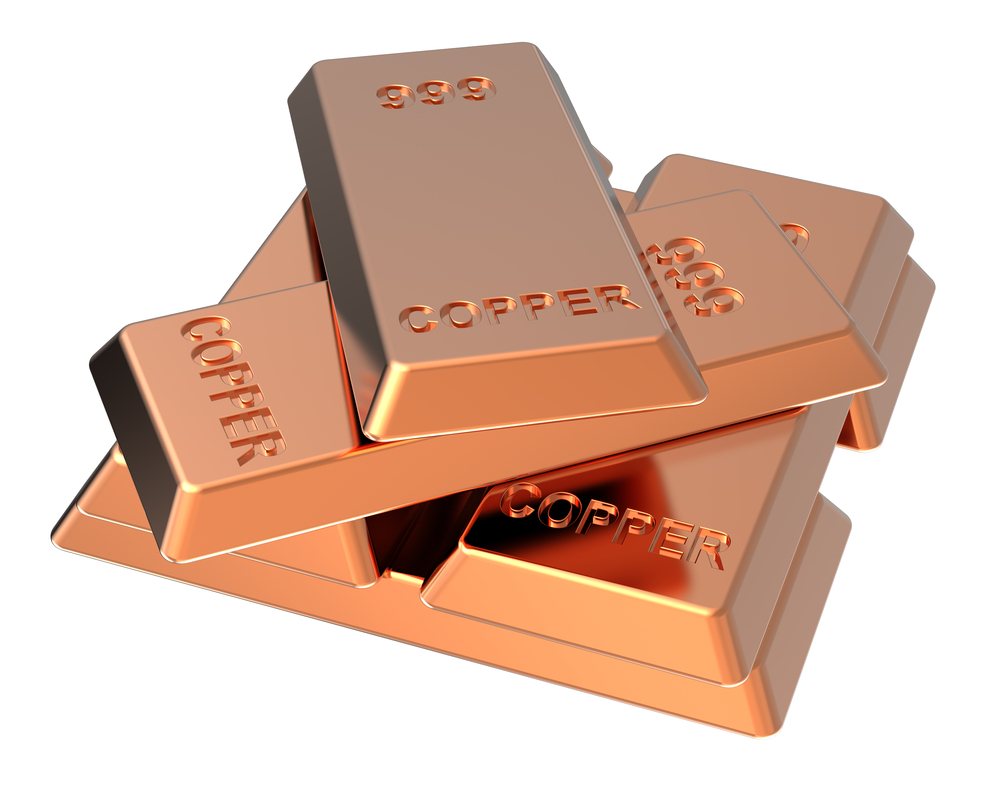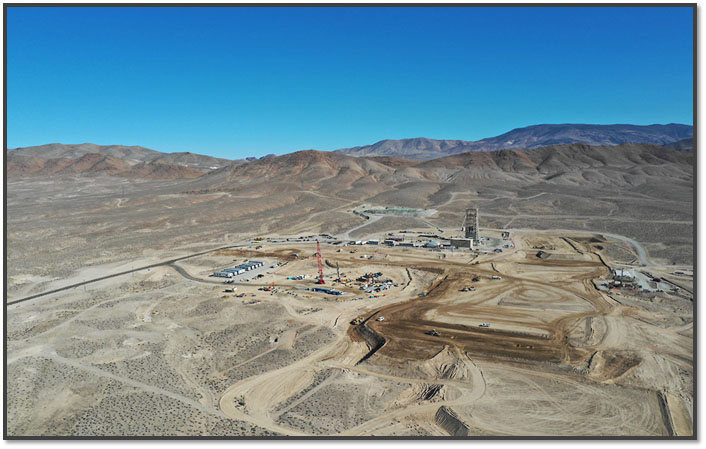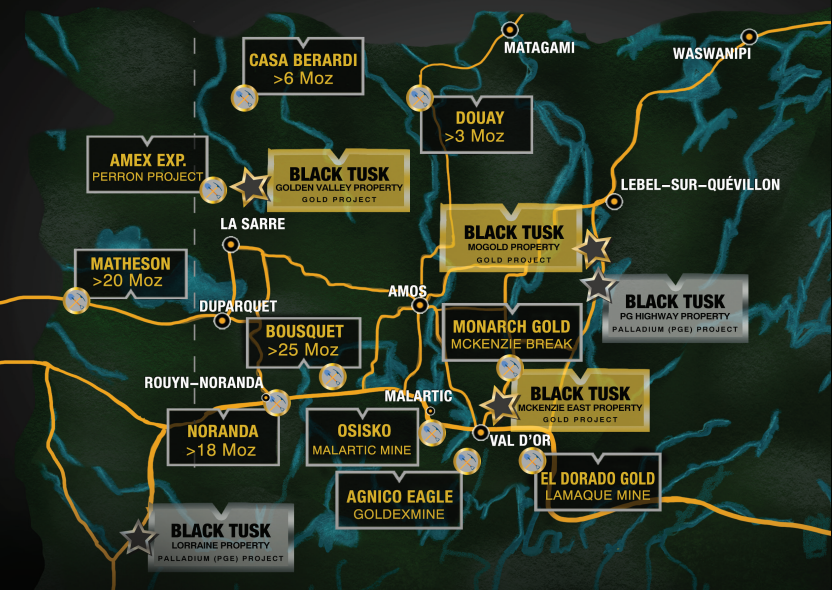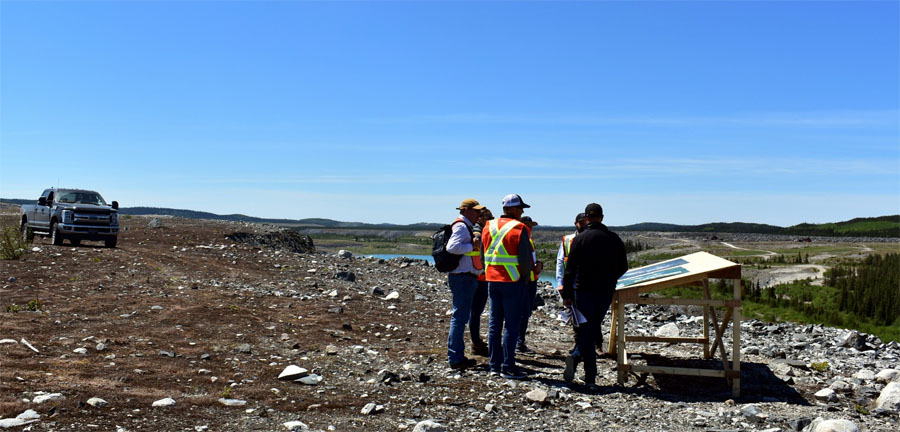Byron King: The REE sector has declined over the summer with the rest of the junior resource space and stock market. While the share prices of the companies I follow may be lower than they were six months ago, the quality of the companies is actually dramatically better.
Stans Energy Corp. (HRE:TSX.V) and Ucore Rare Metals Inc. (UCU:TSX.V; UURAF:OTCQX) are much stronger, much better companies in terms of the security of their mining claims, permitting, the people that they have working with them and certainly in terms of the metallurgical technology that they have at their disposal to turn rocks into a salable product.
TCMR: Why should investors stay in this space?
BK: We had a sweet run in this space in 2010 and 2011. But for the past year or so, it's been brutal. So yes, many investors should consider bailing out, if they haven't bailed out already. This game is not for the timid. Actually, about two years ago, I got my readers out of Molycorp Inc. (MCP:NYSE) at about $55/share. Molycorp was recently at $8/share. Many other rare earth players have taken similar hits.
But it's not hopeless. The two REE companies that I'm following—Ucore and Stans—are true technology leaders, in my view. Each one has developed significant extractive metallurgical techniques to get the high-priced heavy rare earth elements (HREEs) out of the rocks and to turn the material into saleable products.
Stans and Ucore are key players. Both companies have solid partnerships with national governments, which is crucial right now. Stans has a solid partnership with the government of Russia. Ucore has a solid partnership with the U.S. government through the Defense Department. Those two are the strongest boxers in the ring, at least on my fight card.
TCMR: What are you telling your readers when they inquire about the performance, or lack thereof, of many of these REE juniors?
BK: There are fundamental disconnects between share price and the overall quality of these companies. My advice is to remain patient. I tell people that they should not be investing in this space with money that they can't afford to lose. You have to be willing to ride the rollercoaster.
We're getting closer to the end-state breakthroughs, though, such as we've seen with the extractive triumphs—and I mean triumphs!—that Stans and Ucore are making. So I anticipate share price increases over time.
TCMR: Is it possible to calculate the value of these companies without transparent REE prices from inside China?
BK: The China issue makes it more difficult. Yet I certainly believe that there's enough information available to make informed decisions about the merits of Ucore and Stans.
The day-to-day pricing out of China doesn't tell the entire story, in any long-term way. China has long-term REE supply issues. The Chinese are looking around the rest of the world for new deposits and technologies. The Chinese spent a big part of the last 25 years high-grading and exporting the good stuff from their deposits at low prices. It's only in the last two to three years that the Chinese have put a squeeze on exports. Now the country finds itself wrestling with issues of resource depletion. Within very few years, China will wind up being a buyer on world markets as opposed to an exporter.
TCMR: At least a buyer of certain heavies.
BK: Yes—erbium, terbium, gadolinium, europium, lutetium and possibly yttrium.
TCMR: There's an issue looming that's even larger than the "fiscal cliff." Can you talk about that?
BK: It plays into the seemingly endless sales of shares across the entire junior resource space. Much of the U.S. tax code will dramatically alter on Jan. 1. The popular news media keeps focusing on the expiration of the so-called Bush tax cuts. So will Congress and President Obama extend tax cuts for the middle class? That's the headline question.
Yet for investors of any class, capital gains rates are scheduled to go up dramatically. Capital gains rates will almost double from 15% to nearly 30%. Taxes on interest will also go up. Plus—and this is really going to be a punch in the gut—tens of millions of taxpayers are going to be subject to the alternative minimum tax, which is a completely parallel tax system to the one that everyone is used to with Form 1040. A lot of people who understand this have been moving money. They're cashing out of hedge funds—which then sell their resource shares—and changing structures now to avoid problems in 2013.
TCMR: So, if an investor sold a stock and made a $10,000 profit, they would pay a 15% tax on that money now, but it could be as high as 30% come Jan. 2?
BK: If you sell on Jan. 2 when the stock market opens and you make that same $10,000 gain, your capital gain tax would be about $3,000 versus $1,500. It would be almost double what you would pay now. If you want to take any capital gains, do it now, or sell something else and book a loss against it, and then buy it back next year.
TCMR: Let's look closely at Stans. What has Stans done to further derisk its Kutessay II REE project in Kyrgyzstan?
BK: Over the summer, Stans had problems with local political interference with the title to its mineral claims in Kyrgyzstan. A small group was trying to undermine its project. It's a sign of a project that's in a certain development stage, and then after the heavy lifting is over, other people look at it and realize it could go places. They want to hijack things.
Stans waged a tough struggle at the political levels and in the court system of Kyrgyzstan. About two months ago, Stans won every phase of its court cases. Every claim that the other side threw at Stans was dismissed. Right now, the Stans mineral claims are as strong, as tight, as well versed, as heavily protected as they have ever been. In this sense, Stans has done a splendid job of derisking the claims politically.
On the technical side of things, Stans worked hard to prove up the extractive metallurgy to pull out the REEs, especially the high-value HREEs. It has actually produced ingots of erbium, terbium, gadolinium and certain other elements. It has produced end-use, high-purity, high-quality elements. I mean real metal! So Stans has the ability to produce saleable elements using its processes. Nobody else in the non-Chinese world can make that claim. Only Ucore comes close.
TCMR: Stans acquired a processing facility that will eventually handle the concentrate from Kutessay II. How long before Stans is processing concentrate at that facility?
BK: Stans has refurbished the old Soviet-era facility. It's in good shape. Stans expects to be in production in 2014. It's in the home stretch.
TCMR: Is it going to need to raise more capital?
BK: Stans has a large amount of cash on hand, but these things get expensive. It has numerous options available, but there haven't been any decisions yet.
TCMR: Ucore just released its preliminary economic assessment (PEA). In late November, you wrote that its PEA reminds you of "Babe Ruth pointing to the bleachers during game three of the 1932 World Series." In other words, Ucore is about to knock the ball out of the park."
BK: Ucore engaged some exceedingly smart organic chemists. Its lead chemistry specialist, Richard Hammen, is the former director of chemistry at the Jet Propulsion Laboratory. He is literally a rocket scientist. He has come up with a new chemical pathway for extracting REEs using ligand chemistry. It's similar to chelation, a clinical process that is often used in the medical field to remove heavy elements from people suffering from metal poisoning.
The Hammen technology uses big, organic molecules to find little REEs within the ore concentrate and separate them out atom by atom. Plus, the new process dramatically speeds up the reaction kinetics. What used to take hours, days, even weeks of chemical processing using resin-type materials, these guys are doing in a fraction of a second. I've seen it work at the lab and bench scale.
Based on that technology, Ucore has come up with a PEA for a processing facility that involves significantly lower costs in the range of $220 million (M) for an up-and-running facility. That's a fraction of what other facilities are estimated to cost, and the internal rates of return are just phenomenal.
TCMR: Is that process proprietary to Ucore or could Hammen effectively license it to other companies?
BK: There's a very tight document to protect the intellectual property for Ucore. When they made the agreement, no one anticipated how many other opportunities there could be for this technology across the metals industry. There are other opportunities to use this technology across the rest of the mining industry. We haven't heard the end of the Hammen process by a long shot. This is an astonishing level of technology, but Ucore is in on the ground floor.
TCMR: Ucore has a deal with the Defense Department and now has figured out the metallurgy. What's next?
BK: The next step is to build a pilot plant. Right away, people ask how Ucore will get the money and whether it will have to dilute the shares. Well, we know that a large source of funding will come from the Defense Logistics Agency. There's also strong support from the state of Alaska, which has a "permanent fund" based on decades of oil revenues. Then there are the ultimate downstream customers who will benefit from these materials. These customers may also raise funds for the plant. Chief Executive Officer Jim McKenzie has said that the last thing he wants to do at this stage is dilute the shareholders by issuing more shares willy-nilly.
TCMR: Are there other REE companies that you still have faith in, Byron?
BK: I've been following a group called Medallion Resources Ltd. (MDL:TSX.V; MLLOF:OTCQX; MRD:FSE). It is quite different from Stans or Ucore in the sense that it wants to build an REE program using monazite mineral sands, which are harvested around the world, including around the Indian Ocean basin. Its business model involves offtaking monazite from sand operations.
Medallion has been in discussions with well-funded groups in the Middle East about setting up an operation there. When I tell the story to people, they look at me and say, "Whoa, I don't associate the Middle East with REEs." Yet the Middle East has lots of money and the ability to buy the technology, hire the people and set up the systems that they need. Medallion is in the very enjoyable position of having numerous groups in the Middle East vying for its attention to fund a deal. Medallion could do very well.
Also, I would be remiss if I didn't give at least some favorable mention to Tasman Metals Ltd. (TSM:TSX.V; TAS:NYSE.MKT; TASXF:OTCPK; T61:FSE), which has an operation that it's putting together in Sweden and Matamec Explorations Inc. (MAT:TSX.V; MRHEF:OTCQX), which is putting together a play in Quebec.
TCMR: Tasman has a high HREE component at Norra Karr in Sweden.
BK: Norra Karr is a mining-friendly jurisdiction close to infrastructure. There's a well-developed mining industry in Sweden, which is ground zero for REEs. It discovered all those elements back in the 1790s and 1800s.
TCMR: What's going to drive Tasman's share price higher?
BK: Tasman and Matamec both need some good news in the downstream metallurgy department. They both need real, reproducible, chemical engineering news that demonstrates the viability of the metallurgical extraction.
To their credit, both companies are working in the HREE space, which is where the money is. The world markets will be more than glad to see more non-Chinese HREE plays.
Ucore is an American play. Stans is a Russian-Central Asian play. Europe wants to see its own play, and Tasman fills that bill. Matamec is working with the Japanese and has support from Toyota. Overall, the demand is out there from the electronics, automobile and heavy industrial-type sectors. With the HREE players, there's much less risk of the kind of price crash issues we fear with the light rare earths lanthanum and cerium.
TCMR: Matamec has taken some heat for the deal that it did with Toyota Tsusho Corp. (TYHOY:OTCPK). Did the company negotiate the right deal?
BK: Time will tell. There are a couple schools of thought. One is that this is a beneficial, cooperative agreement with Toyota, and a great partnership for research and development. There is another, more cynical view, that it was just a calculated move by Toyota to take a look at Matamec's technology.
Toyota went to several other REE companies and asked to see behind the magic curtain. Some companies actually turned Toyota down because they didn't see a quid pro quo. However, the idea that a big company like Toyota is interested in Matamec is a selling point.
TCMR: You also cover graphite. What was the last graphite project you visited?
BK: In May, I went to Energizer Resources Inc. (EGZ:TSX.V; ENZR:OTCBB) in Madagascar, off the coast of Southern Africa, to its Green Giant project. The geology is stunning—the project is located in the old core of a mountain range, buried miles deep about 350 million years ago. Now it's uplifted and eroded away with a graphite outcropping at the surface. The graphite-bearing landscape is vast. In fact, it's visible from space.
The mineability is relatively simple. There's not a developed mining infrastructure in Madagascar, but all you need is earth-moving equipment and trucks. It's within proximity to the coastline and to being able to ship it out and export it to wherever it needs to go.
The quality of the graphite is quite high. We were doing our own bench-scale modeling while I was there. We had crushers and grinders. We put material in and pulled it out. Just at the bench scale, without any fancy laboratory equipment or advanced separation, we were getting about 14% graphite concentrations out of rock samples that I picked up off the ground. It has immense volumes, very significant qualities and nice grades.
The next big issues for graphite are who the customers will be, where this graphite will go and what people will do with it. That's what goes into the secret sauce of a graphite play.
TCMR: Does Energizer need an offtake partner to get this project to production?
BK: Yes, in my view, Energizer needs an offtake partner to make the whole thing work.
TCMR: Sherritt International Corp. (S:TSX) is developing the Ambatovy nickel project in Madagascar. It recently got its operating permit. Do you think that Energizer would have any trouble getting its permit?
BK: No. Energizer has a good relationship with the government. Overall, the politics down there seem workable. Energizer also has an extremely good and productive relationship with the local villages and people. I don't see major social or political barriers to bringing development onstream.
TCMR: The graphite space has witnessed steeper declines than the REE sector. Has the space overpromised and under delivered?
BK: The graphite hype has been unfortunate. In general, the space overpromised on what graphite can do and what its uses are. Just about everyone who was promoting a graphite project, for one reason or another, failed to mention a couple of very important points. One is that over half the graphite that gets used is a synthetic product that's made out of petroleum coke from oil refineries. It's not something that anyone needs to dig out of the ground.
Another example is that many players dramatically overstated the case for future graphite uses in automobiles, lithium-ion batteries and electronics. Mined graphite can be used in those products, but people may have exaggerated how big those markets could be and how quickly they could reach those levels.
TCMR: Are there any other graphite companies you're following, Byron?
BK: I've been following Focus Graphite Inc. (FMS:TSX.V) for almost two years. I've always liked Focus because its deposit at Lac Knife, Quebec, is among the highest-grade deposits in the world.
TCMR: Quebec has a history of graphite mining.
BK: It does. Focus has a great deposit in Quebec. But Focus is more than a mine with great ore. Focus management has a technology-based plan for what it wants to do with the graphite. I wish management would be more open about the actual details of the technology, but at this stage, it's all at a close-hold, highly proprietary level. Still, every company makes its own decisions on what it wants to keep close to the chest. I'm bullish on Focus and where it's going with its technology uses for graphite.
TCMR: Do you have some parting thoughts for us on the critical metals space?
BK: It's been a very frustrating space in the last couple of years—along with much else in the resource space, to be sure. There was a lot of technology-metals overpromising. There was a lot of under-delivery. The technology materials space has all the difficulties you encounter with traditional mining plays, but with the added difficulties of high-tech applications.
For example, when you're mining gold, silver or copper, there are two, three or four elements to separate using techniques that have been around for 100 years or more. When you mine REEs, you're dealing with 10, 12 or 14 elements that have annoyingly similar chemical properties, electrical properties and separation and filtration issues. And if you don't pull them all out at the time you're separating them, you're literally throwing good money into the waste pile or into storage.
TCMR: That's a problem, too, because these metals are not stable.
BK: That's true. You can store gold at Fort Knox for 60 years and it will be the same, whereas some REEs instantly start to break down. There's a decay factor involved. Yet, the world needs these materials for technology applications downstream. We're only going to need more of them, not fewer, as people improve their standard of living. There is a future for them, but you have to go in with your eyes open, be patient and read really good newsletters.
TCMR: Now that's certainly some very good advice. Good speaking with you today, Byron.
Byron King writes for Agora Financial's Daily Resource Hunter. He edits two newsletters: Energy & Scarcity Investor and Outstanding Investments. He studied geology and graduated with honors from Harvard University, and holds advanced degrees from the University of Pittsburgh School of Law and the U.S. Naval War College. He has advised the U.S. Department of Defense on national energy policy. Click here for a free copy of Bryon King's award-winning Outstanding Investments.
Want to read more exclusive Critical Metals Report articles like this? Sign up for our free e-newsletter, and you'll learn when new articles have been published. To see a list of recent interviews with industry analysts and commentators and learn more about critical metals companies, visit our Critical Metals Report page.
DISCLOSURE:
1) Brian Sylvester of The Critical Metals Report conducted this interview. He personally and/or his family own shares of the following companies mentioned in this interview: None.
2) The following companies mentioned in the interview are sponsors of The Critical Metals Report: Stans Energy Corp., Ucore Rare Metals Inc., Medallion Resources Ltd., Tasman Metals Ltd. and Energizer Resources Inc. Streetwise Reports does not accept stock in exchange for services. Interviews are edited for clarity.
3) Byron King: I personally and/or my family own shares of the following companies mentioned in this interview: None. I personally and/or my family am paid by the following companies mentioned in this interview: None. I was not paid by Streetwise Reports for participating in this interview.




























































